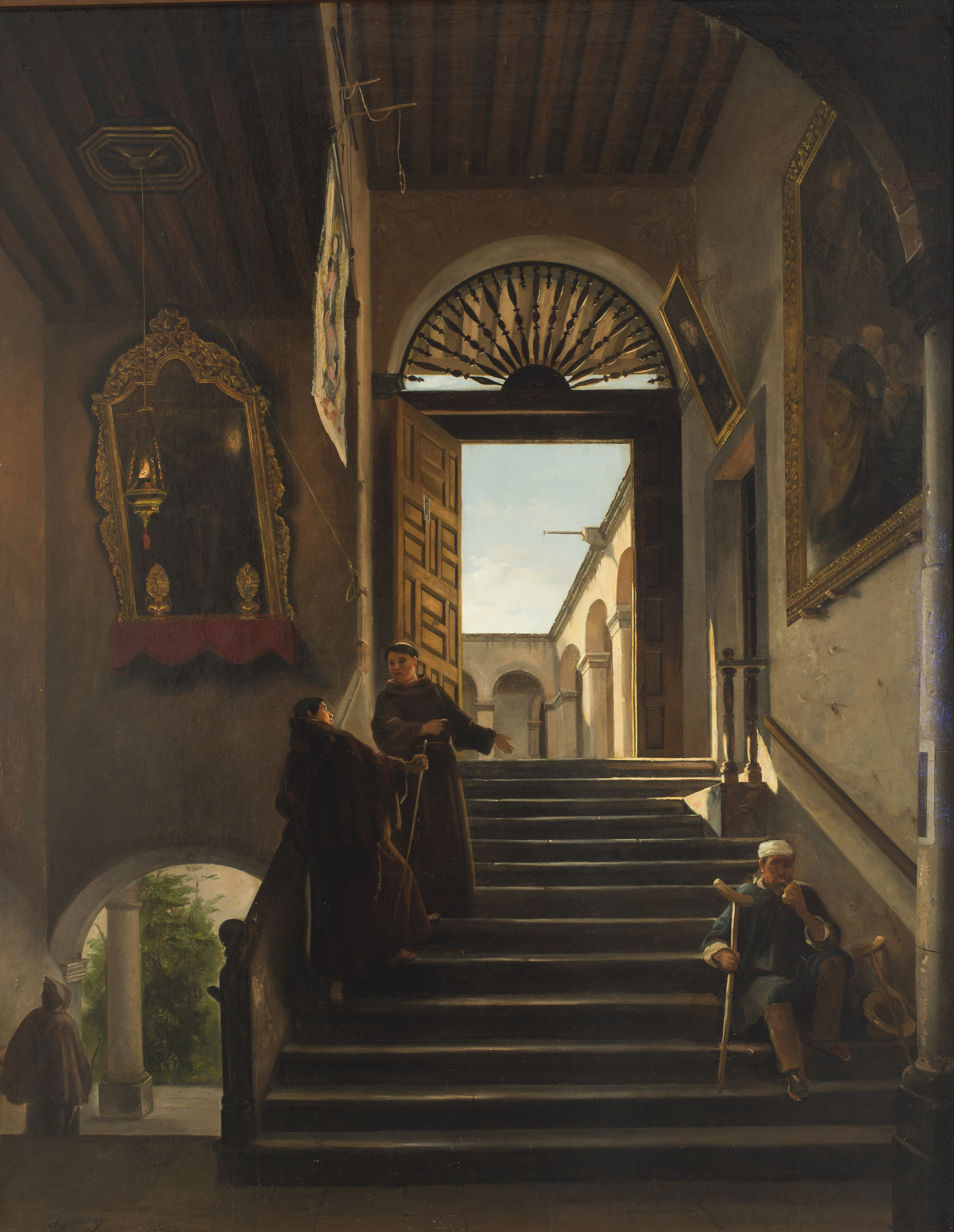Dear DailyArt users, if you need artsy calendars for 2020 we have something for you! Check out what you can buy on our new DailyArt online shop: Women Artists Monthly Wall Calendar, Masterpieces Monthly Wall Calendar, and Weekly Desk Calendar, with beautiful masterpieces and short stories about them. We ship worldwide!
The Interior of a Dieguinos Cloister depicts a genre scene where the religious atmosphere is conjured up with light and shadow. The Franciscan order of the Dieguinos is named after the native tribes of San Diego. These friars were the first Europeans to make contact with the native tribes. Their monasteries housed the sick and the homeless, represented in this painting by the man sitting on the steps, aloof from the conversation between the friars. The genre of this painting was one that was appropriate for a woman to paint in the nineteenth century, but it was also a means for Juliana Sanromán to show off her artistic skills in the arrangement of the figures, the architectural construction, and the light gradations. Juliana Sanromán and her sister Josefa Sanromán (1829–?) are amongst the most important women painters of the nineteenth century, Mexico. Records of their work have appeared in the exhibition catalogs of the Academia de San Carlos around 1849, where Juliana presentedthe Interior of a Dieguinos Cloister. Women were not allowed to attend the Academy until 1888, so it is assumed that the sisters took private lessons from Spanish painter Pelegrín Clavé (1811–1880), the director of the Academy.
Sanromán’s themes wereamong those that were deemed appropriate for women in her class;domestic and religious interiors, arts and crafts, etc. but her paintings also represented a burgeoning appreciation for scenes of everyday life, based in both the realist trend of the time and the romantic idealization of national themes. This tendency would come to be known as costumbrismo in Hispanic America and would continue to grow at the margins of academic painting. The public exhibition of Sanromán’s work was interrupted in 1850 when she got married, only two years before her untimely death.
- Eliane Pinheiro
This masterpiece is owned by Collection Kaluz from Mexico City, Mexico but until November 17th it is in the Museu de Arte de São Paolo where you can see it at the exhibition of Women’s Histories that presents several works from the 1st to the 19th centuries.P.S. Beautiful interiors shown in paintings can be a great inspiration. Check out these 6 rooms from famous paintings brought to real-life <3


 Juliana Sanromán
Juliana Sanromán